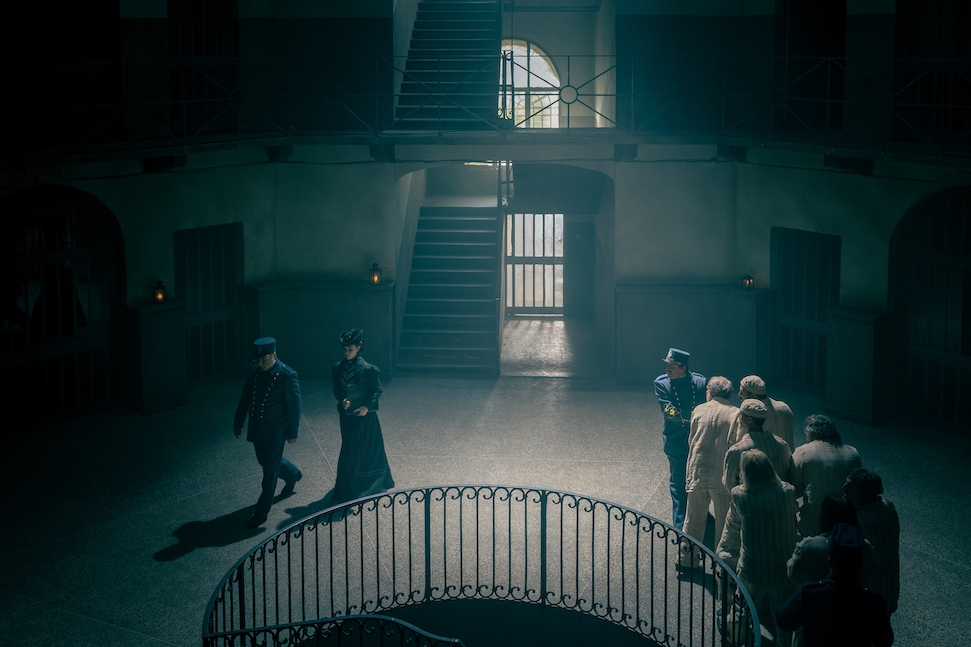

In elegant late 1800s Turin, with the Mole Antonelliana still under construction, Matilda De Angelis plays the stubborn and equally proud lawyer who is the central figure of the Netflix series The Law According to Lidia Poët, as she fights for the right to exercise a profession prohibited at the time to women.

Introducing the city of Turin is the majestic façade of Palazzo Carignano on piazza Carlo Alberto with the date 3 November 1883; the nearby Teatro Regio is a key setting for episode 1, the location was the Teatro Alfieri of Asti. During her carriage journey to the Le Nuove prison, there is a glimpse of piazza San Carlo, one of the most significant squares in the historical centre dominated by a statue of Emmanuel Philibert on horseback and bounded to the south west by the almost identical facades of the Churches of St. Cristina and St. Charles. While the sinuous red brick façade of Palazzo Carignano, overlooking piazza Carignano provides the exteriors for the courthouse of Turin, the interiors were also used alongside rooms in the ex Curia Maxima in via Corte d’Appello (made available for the series by a special dispensation), and the halls of Palazzo Falletti Barolo and Palazzo dei Cavalieri. The latter also lent its interiors for the newspaper offices of Gazzetta Piemontese, where Lidia’s brother-in-law Jacopo Barberis (Eduardo Scarpetta) is a journalist.
Central piazza Cavour provided the exteriors for the family residence, Villa Barberis, whose interiors were created in Villa San Lorenzo, Racconigi.
The funeral of episode 1’s victim, a ballerina, takes place at Turin’s cimitero monumentale. The De Santis chocolate factory at the heart of the second episode is actually the former wool factory lanificio Bona, in the municipality of Carignano.
Locations also included the Società Canottieri Armida, on the banks of the river Po in Valentino Park; the Castle and Charterhouse of Collegno; the Piedmont Railway Museum of Savigliano; the Basilica of Superga and Borgo Cornalese in Villastellone.
In elegant late 1800s Turin, with the Mole Antonelliana still under construction, Matilda De Angelis plays the stubborn and equally proud lawyer who is the central figure of the Netflix series The Law According to Lidia Poët, as she fights for the right to exercise a profession prohibited at the time to women.

Introducing the city of Turin is the majestic façade of Palazzo Carignano on piazza Carlo Alberto with the date 3 November 1883; the nearby Teatro Regio is a key setting for episode 1, the location was the Teatro Alfieri of Asti. During her carriage journey to the Le Nuove prison, there is a glimpse of piazza San Carlo, one of the most significant squares in the historical centre dominated by a statue of Emmanuel Philibert on horseback and bounded to the south west by the almost identical facades of the Churches of St. Cristina and St. Charles. While the sinuous red brick façade of Palazzo Carignano, overlooking piazza Carignano provides the exteriors for the courthouse of Turin, the interiors were also used alongside rooms in the ex Curia Maxima in via Corte d’Appello (made available for the series by a special dispensation), and the halls of Palazzo Falletti Barolo and Palazzo dei Cavalieri. The latter also lent its interiors for the newspaper offices of Gazzetta Piemontese, where Lidia’s brother-in-law Jacopo Barberis (Eduardo Scarpetta) is a journalist.
Central piazza Cavour provided the exteriors for the family residence, Villa Barberis, whose interiors were created in Villa San Lorenzo, Racconigi.
The funeral of episode 1’s victim, a ballerina, takes place at Turin’s cimitero monumentale. The De Santis chocolate factory at the heart of the second episode is actually the former wool factory lanificio Bona, in the municipality of Carignano.
Locations also included the Società Canottieri Armida, on the banks of the river Po in Valentino Park; the Castle and Charterhouse of Collegno; the Piedmont Railway Museum of Savigliano; the Basilica of Superga and Borgo Cornalese in Villastellone.
